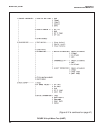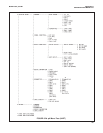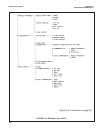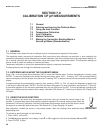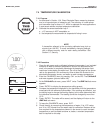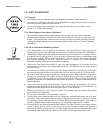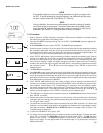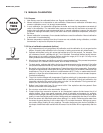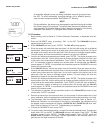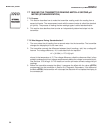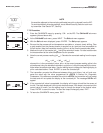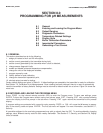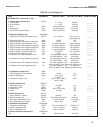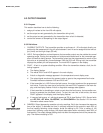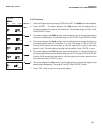
52
MODEL 3081 pH/ORP SECTION 7.0
CALIBRATION OF pH MEASUREMENTS
7.6.1 Purpose
1. New sensors must be calibrated before use. Regular recalibration is also necessary.
2. Manual calibration is an alternative to auto calibration. Because auto calibration eliminates many
common calibration errors, it is strongly recommended.
3. In auto calibration, the transmitter recognizes the buffer and uses the temperature-corrected pH
value in the calibration. The transmitter also measures noise and drift and does not accept cali-
bration data until readings meet programmed limits. In manual calibration, however, the user must
judge when readings are stable, look up the buffer value at the calibration temperature, and key in
the value.
4. Manual calibration is necessary if non-standard buffers are used for calibration. Manual calibration
is also useful in troubleshooting.
5. Because temperature readings from the pH sensor are not available during calibration, a reliable
thermometer is required to complete the procedure.
7.6.2 Use of calibration standards (buffers)
1. A pH measurement is only as good as the calibration, and the calibration is only as good as the
buffers. A careful buffer calibration is the first step in making an accurate pH measurement.
2. Calibrate with buffers having pH values that bracket the pH of the process. For example, if the
pH is between 8 and 9, calibrate with pH 7 and 10 buffers. Commercial buffers having interme-
diate range pH are readily available. Buffers outside the range pH 3.0 to pH 10.0 may not be
readily available and must be prepared by the user.
3. Allow time for the sensor and buffers to reach the same temperature. If the process temperature
is more than 10°C different from the buffer, allow at least 20 minutes.
4. For best results, calibrate with buffers having the same temperature as the process. If the buffer
and process temperature differ by more than about 15°C an error as great as 0.1pH may result.
5. Be careful using buffers at high temperatures. Protect the solution from evaporation. Evaporation
changes the concentration of the buffer and its pH. Be sure the pH of the buffer is defined at high
temperatures. The pH of many buffers is undefined above 60°C. Finally, no matter what the tem-
perature is, allow the entire measurement cell, sensor and solution, to reach constant tempera-
ture before calibrating.
6. The pH of a buffer changes with temperature. Equations relating pH to temperature for common
buffers have been programmed into the Model 3081 pH transmitter. During auto calibration, the
transmitter calculates the correct buffer value and uses it in the calibration. During manual cali-
bration, the user must enter the correct pH value.
7. Buffers have limited shelf lives. Do not use a buffer if the expiration date has passed. Store
buffers at controlled room temperature.
8. Do not return used buffer to the stock bottle. Discard it.
9. Protect buffers from excessive exposure to air. Atmospheric carbon dioxide lowers the pH of
alkaline buffers. Other trace gases commonly found in industrial environments, for example,
ammonia and hydrogen chloride, also affect the pH of buffers. Molds, from airborne spores, grow
readily in neutral and slightly acidic buffers. Mold growth can substantially alter the pH of a buffer.
10. Rinse the sensor with deionized water before placing it in a buffer. Remove excess water from
the sensor by gently daubing it with a clean tissue. Do not wipe the sensor. Wiping may gener-
ate a static charge, leading to noisy readings. The static charge may take hours to dissipate. A
few drops of deionized water carried with the sensor into the buffer will not appreciably alter the
pH.
7.6 MANUAL CALIBRATION



